Heating floor is a practical solution for home heating. It is presented in several types of designs. We will tell what system it is worth choosing for laminate.
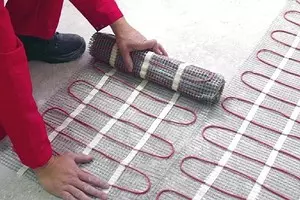
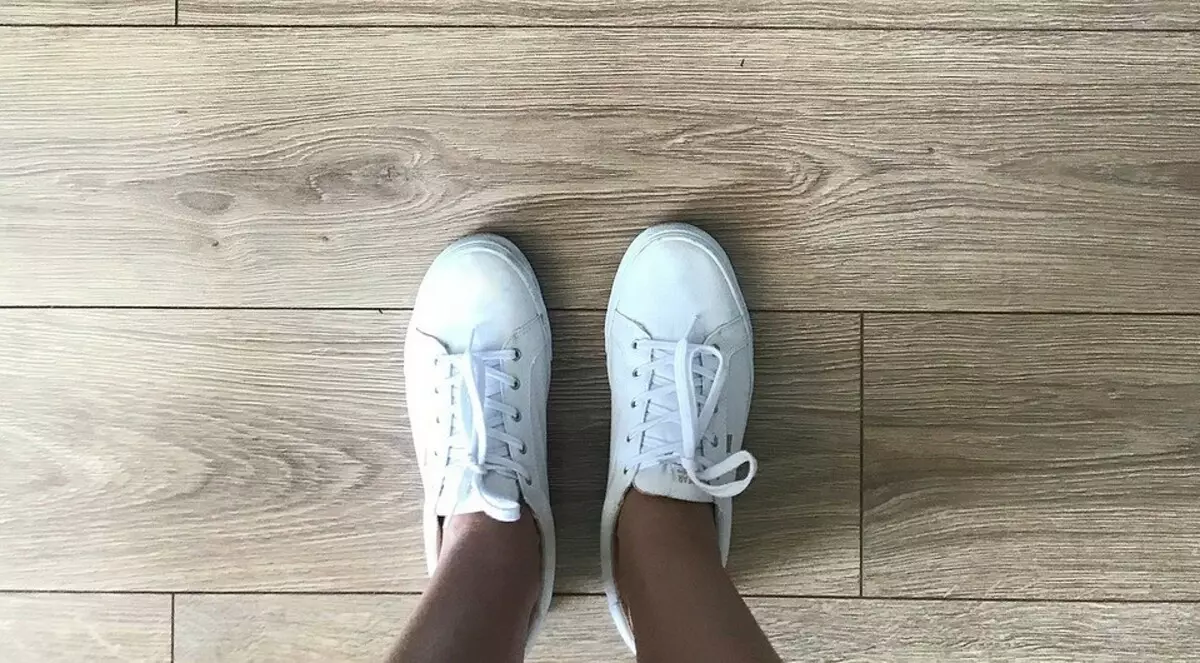
The laminated floor covering is beautiful and functionally, so its demand is only growing. Some varieties of material can be laid on heating grounds. We will understand what warm floors under the laminate are better: reviews from the Internet are not always reliable and can mislead.
Types of heating floors
To warm the floor covering, one of three possible methods can be used: an electric cable, a water circuit or an infrared emitter. All of them can be laminated under laminated material. However, in each case there are some features that we now consider.
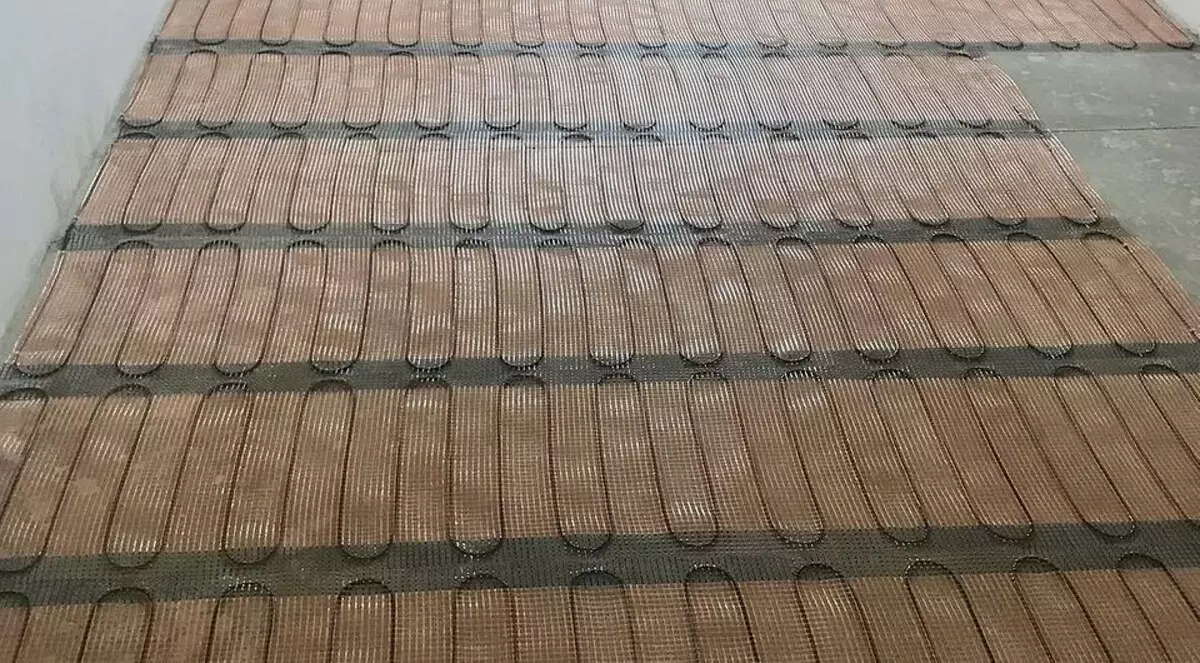
1. Electric heating
In a tie, becoming a kind of heat battery, a cable is laid, which radiates it. The total types of such devices are used.
- Resistive single-core wire. It is connected by both ends to one point of the wiring, which creates certain difficulties when installing. Heating lives providing not changing throughout the length of heat transfer.
- Resistive liquor cable. Operational characteristics are similar to the previous option, but there is no need to connect at a common point. This markedly facilitates installation, and reduces the amount of material necessary for it.
- Self-regulating wire. It is capable of changing resistance depending on the temperature of its surrounding medium. Thus, independently controls the heat transfer, therefore it does not allow overheating of individual sections, which is the main disadvantage of the first two options.
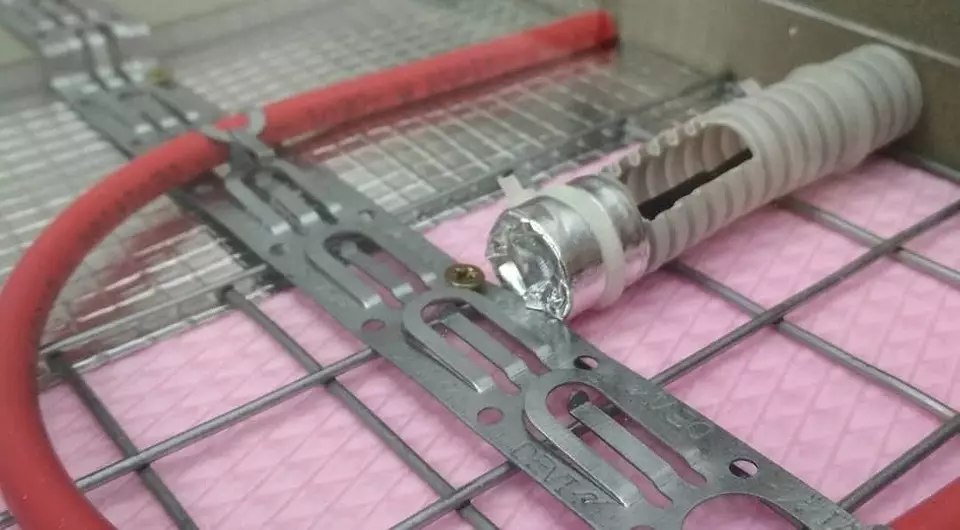
It goes on sale as cables of various types, and the wearing mats collected from them. The last option is more convenient in laying, but its value is somewhat higher. Another plus of such a system is the absence of the possibility of wire moving during the laying process, which can lead to their spoilement.
Installation of all varieties of electric warm floors are about the same. It involves preliminary leveling of the base, laying the thermal insulation and the pouring of the draft screed. A cable or mats are fixed on it, and equipment testing is being tested. If everything is operational, the finish coating is poured. It can be magnesite or anhydride, and not only cement. Laminate stacked in a month, after its complete drying.
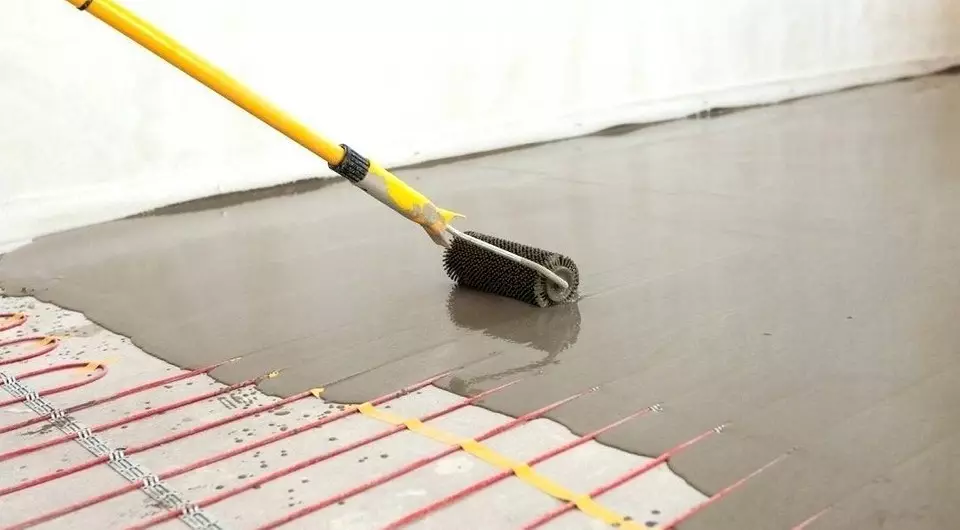
The advantages of using an electrical system can be considered:
- Durability, service life is at least 20 years.
- Easy installation and subsequent maintenance.
- Ability to control the heating temperature.
- Reliability.
From the disadvantages it is necessary to note the high cost of energy, which is also constantly growing, and the weak electromagnetic radiation emanating from cables. Do these disadvantages make this type of sex unacceptable? Establish you, but first consider the other options.
2. Water heating
The contour, which moves the liquid coolant, is mounted in the screed. As in the previous case, it accumulates heat that gets from heated water. This device without restrictions is applied in private homes, but in high-rise buildings can be installed only on the first floor. Is it possible to use it at all, specialists will decide. This requires to collect a package of documents allowing the connection to the centralized system.
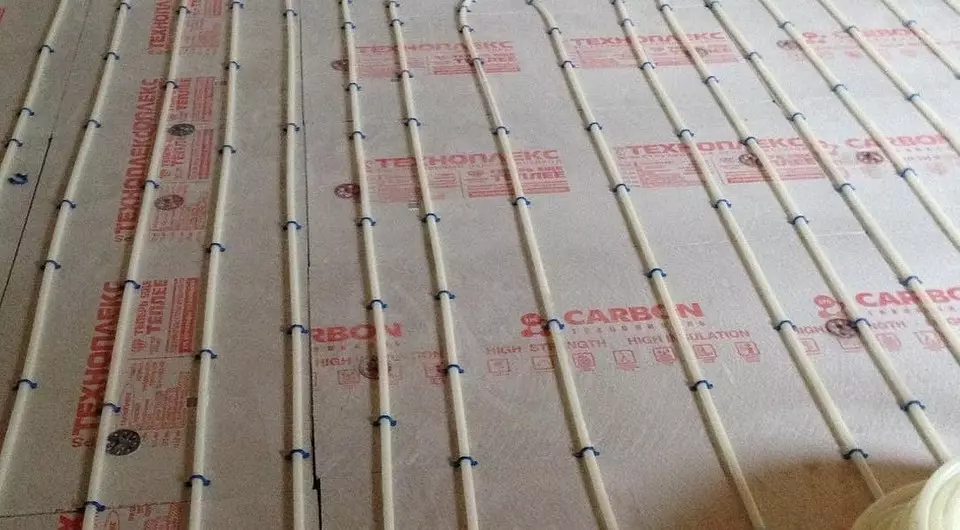
The most difficult in organizing such heating is the right installation with the exact observance of all construction standards. It should be remembered that if the breakdown happens, getting to the problem area will be very difficult. If it is assumed that the floor will be mounted in a large room, it is best to break it into several sections. So it will be easier to equip it.
In addition, in this case it will necessarily need a pump that will ensure the circulation of fluid. If the room is small without it, it is possible to do without it, but then you will have to take care of the competent design of the design so that the coolant moves independently.
For the normal operation of heating floor, uninterrupted and uniform fluid supply is necessary. This is possible only if there is a collector equipped with a mixing node. Optimally, if a special cabinet will be highlighted under the node. Here are all adjustment systems.
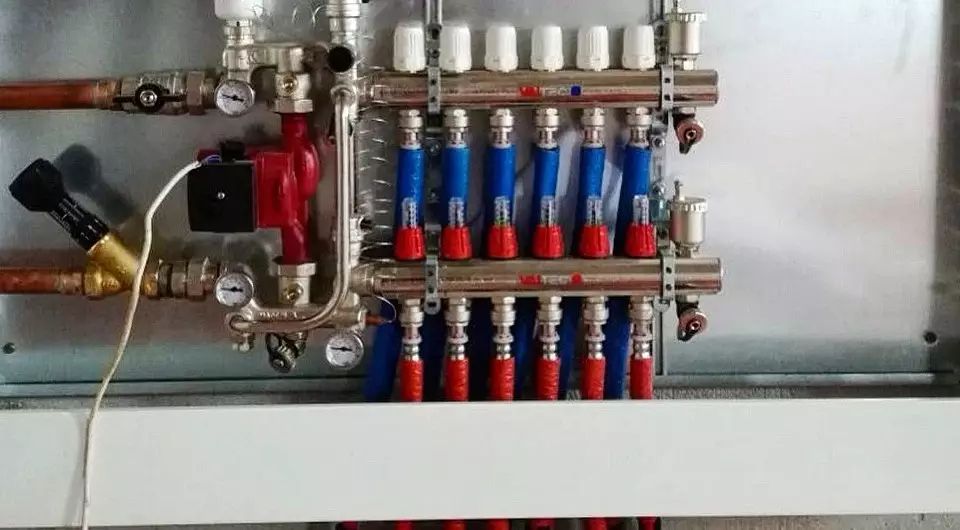
It is assumed that the water temperature at the entrance should not exceed 45-50c. Therefore, the answer to the question is, it is possible to lay a warm floor of water type under the laminate , Will be definitely positive. With caution you need to choose only the material for the screed. The cement-sandy mixture is best suited. Magnesite and anhydride composition is better not to use. They are distinguished by sensitivity to moisture, and with the slightest leakage such a fill will begin to deteriorate.
Of the advantages of water can be noted:
- Safety, since there is no electromagnetic radiation.
- Reliability and durability. With competent laying, the design will work for decades.
- Non-volatility provided that there is no circulation pump in the circuit.
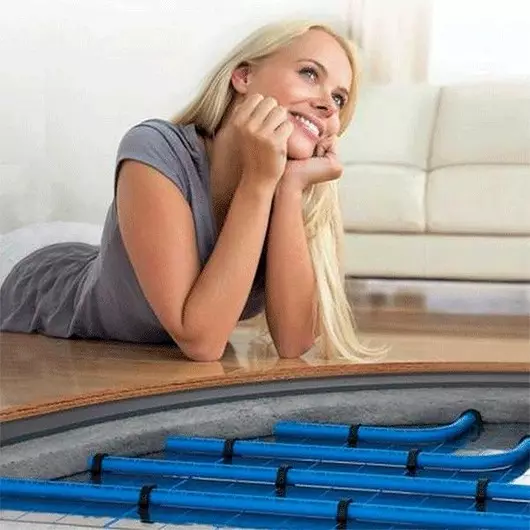
The disadvantages need to include expensive and time-consuming installation, high weight. True, sometimes they make the system of the floor type. In this case, the pipes are stacked in special grooves under wooden floors. The use of this method gives less efficiency, because there is no accumulating heat fill. Instead, metal plates of heat exchangers are used, but it is only a partial solution to the problem.
3. Infrared heating
A variation of electric heating, where the source of heating becomes an IR emitter. It is very compact and is a carbon tape, which is fixed on a film thickness of about 3-4 mm. Thanks to this, the equipment is very convenient to mount. The screed for it is not needed, which significantly reduces the timing of the installation and launch of the system.
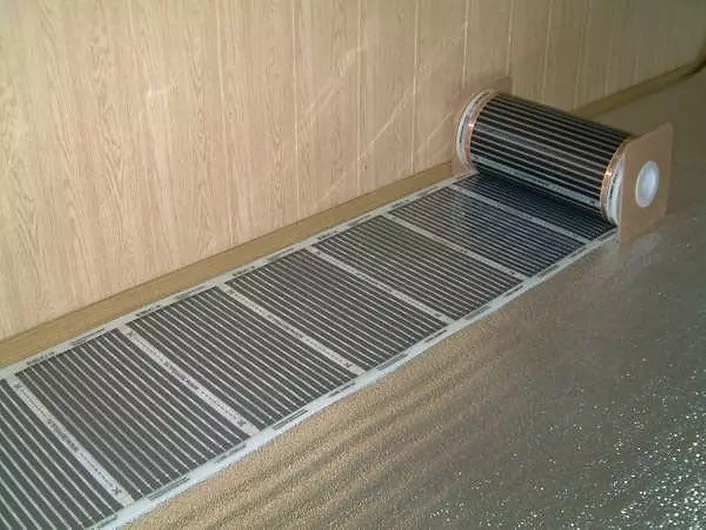
Perhaps the main advantage of infrared heating is the use of radiant energy. The IR wave emitted by the device reaches the nearest large object to them, in this case the flooring, where they accumulate, warming up the base. It transmits heat into the air, and the room temperature raises quickly.
For installation it is necessary to dry even base, since the film is fine and may be damaged. The substrate reflective IR rays must be placed on it, otherwise the heat loss is inevitable. In general, infrared heating gives the greatest effect compared to the methods described above. This happens due to the fact that there is no need to warm up a massive tie.
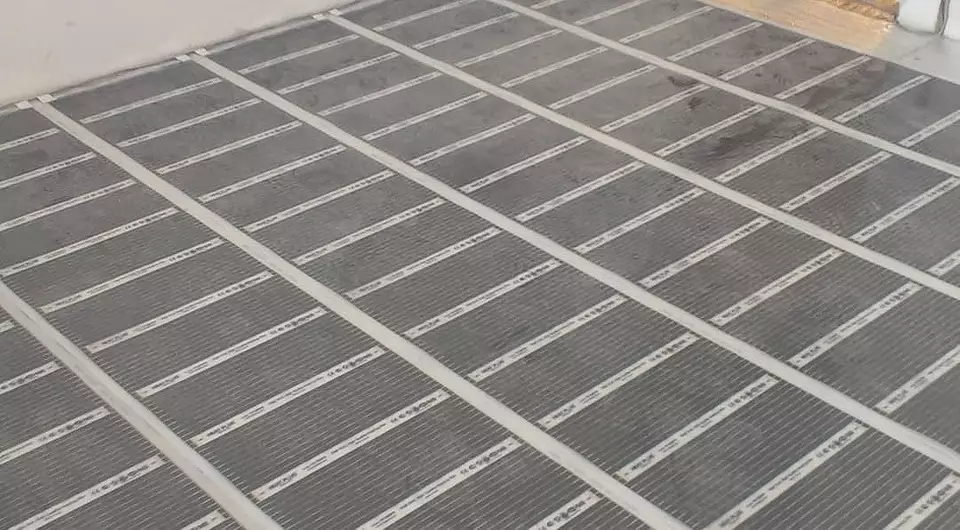
The benefits of the method can be attributed:
- Fast and easy installation, dismantling and reuse. There is no need to pour the base and wait for it drying, putting the laminate immediately after the end of laying the film.
- A small thickness of the installation, which allows you to maintain the height of the ceilings.
- Economic power consumption. The IR emitter uses significantly less energy than the cable. Due to accurate system adjustments, this indicator can still be reduced.
From significant drawbacks it is necessary to note the vulnerability of the film. The absence of a screed makes it possible to overheat the section of the panels due to squeezing under heavy furniture or mechanical damage to its fragment. In addition, the use of equipment in wet premises is not recommended. Another minus is a fairly high price.
What laminate is better to choose for a warm floor: important moments
The conditions of operation of the laminated coating on the heating basis are significantly different in those that exist in the presence of radiator heating. Therefore, when it is elected, you need to consider two features, each of which we will consider in detail.
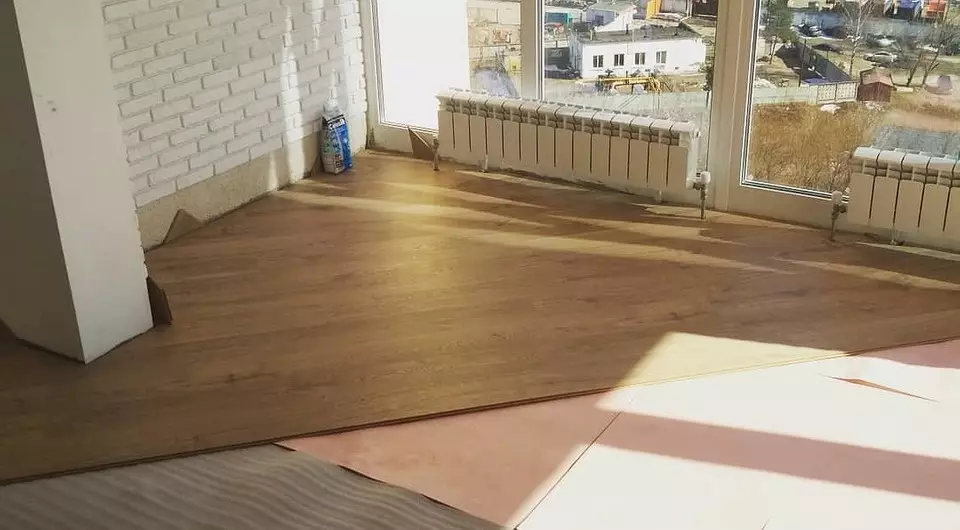
1. The possibility of toxic substances
In the process of manufacturing the material, phenol formaldehyde resins are used that work as a binder. When heated lamellas, they are destroyed with the separation of volatile formaldehyde. It is dangerous to health, can accumulate in the body. The manufacturer reports that toxic gas begins to stand out at temperatures above 28-30C. With radiator heating to such values, the coating is not heated.
However, if there is a heating floor under it, the plates are heated significantly more. Therefore, there is a danger of formaldehyde. To prevent this, the requirements should be performed:
- Purchase only non-toxic material class E0 (without methanal emission) or E1 (minimum emission). Their cost is somewhat higher, but this decor is safe.
- Install the thermal sensors to control the level of heat heating. Never exceed the permitted temperatures declared by the manufacturer.
- Organize efficient ventilation of rooms. Intensive air exchange quickly reduces the concentration of toxic substances.
The principal difference, which laminate to choose for a warm water floor, or for electric, no. The type of system does not play a special role, the temperature of heating lamellas is important. It is about the same for all designs.
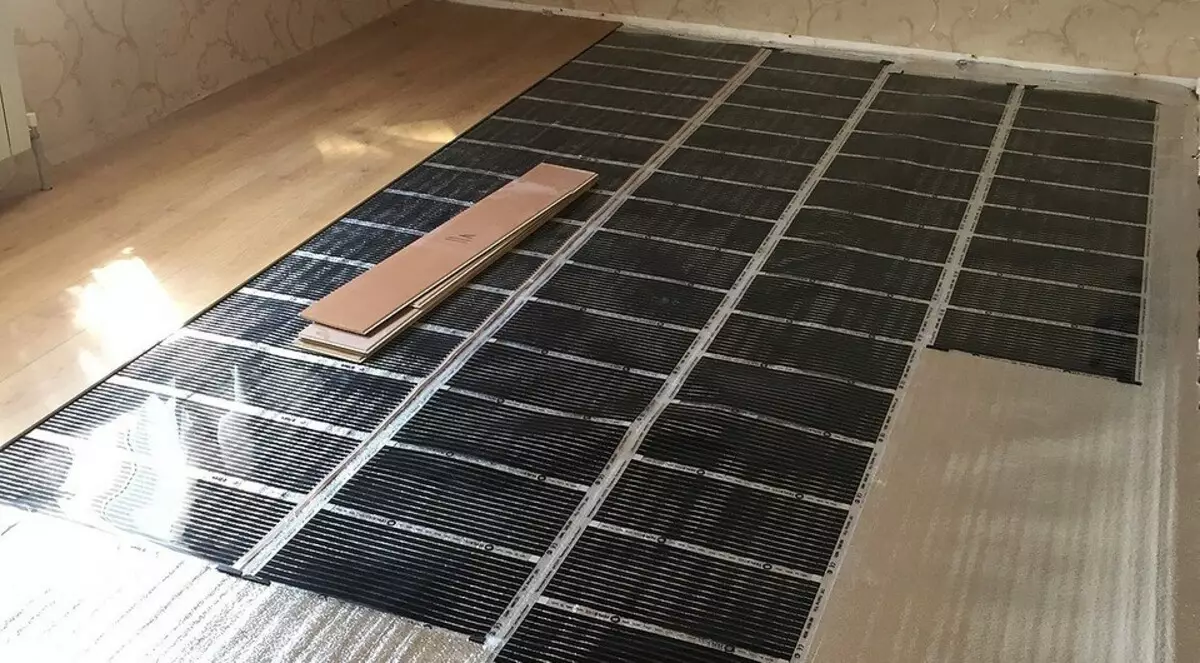
2. Special requirements for the installation of laminated coating
When choosing a material, it is necessary to take into account not only the possibility of isolating toxic substances. There are still a number of moments you need to know:
- Only structures with floating locks can be used, otherwise the deformation of the plates is possible due to the inevitable when the expansion is heated.
- Lamed lamellas only on a special perforated substrate. It has a greater rigidity, a small thick and low thermal resistance, which is necessary when laying on the heating floor.
- It should be borne in mind that the heating zone is more physical boundaries of the heating system. Therefore, it can not be mounted close to the walls.
For the unimpeded return of heat laminated coating, it is necessary to provide it with air access. You can not put carpets on it or put furniture without legs.
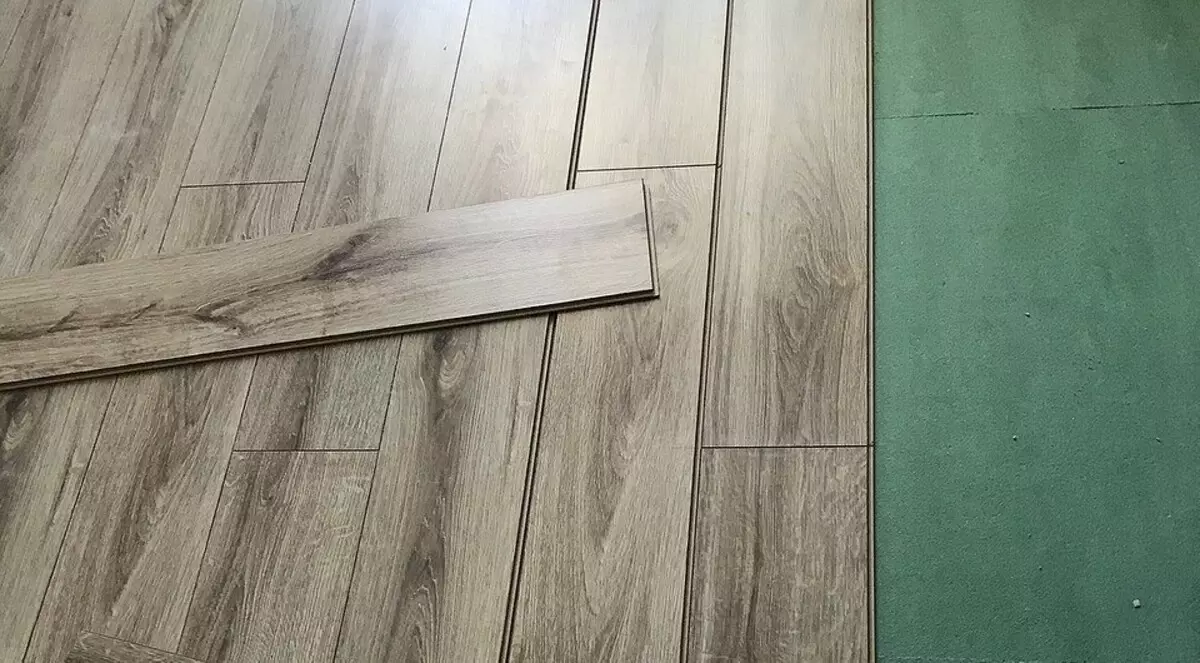
So, what warm floor under the laminate will be the best?
It is not possible to answer unambiguously. The coating is compatible with all types of heating base. The choice should be made taking into account specific operating conditions. For example, for a private house, a good option will be inexpensive to maintain water heating. For high-rise buildings, infrared heating is suitable. In any case, you need to know how to choose the "right" laminated material so that no trouble has occurred during its use.

